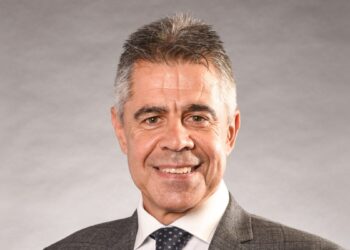Matthew Burgess, director of View Legal, said like many areas of potential conflict in the SMSF space, the starting point for this issue will be with the terms of the trust deed, BDBN and pension documents.
“The default position under many SMSF deeds is that a valid reversionary pension takes priority over any purported BDBN,” Burgess said.
“There are several reasons for this, not least of which is that a valid reversionary pension creates a contractual right for the beneficiary. In other words, the pension assets cannot form part of a death benefit distribution.”
However, Burgess warned that if implemented as part of a comprehensive holistic estate plan, the opposite outcome may be achieved and a BDBN could override a reversionary pension.
He continued that it is important to be aware that the ATO’s position appears to have been confirmed via a National Tax Liaison Group (Superannuation Technical Sub-group) in March 2010.
“[The group stated] ‘There are no SIS Act or SISR provisions that are relevant to determining which nomination an SMSF trustee is to give precedence where a deceased pension member had both a valid reversionary nomination and a valid BDBN in existence at the same time of the member’s death’,” Burgess said.
The statement from the group continued that “while section 59 of the SIS Act and Regulation 6.17A of the SISR place restrictions on superannuation entity trustees accepting BDBNs from a member, as explained in SMSF Determination SMSFD 2008/3, the Commissioner is of the view that those provisions do not have any application to SMSFs”.
“It must also be remembered that section 59 of the SIS Act and regulation 6.17A of the SISR are necessary because of the general trust law principle that beneficiaries cannot direct trustees in the performance of their trust”.
Burgess explained the ATO’s view is that a pension that is a genuine reversionary pension, that is, one which under the terms and conditions established at the commencement of the pension, reverts to a nominated (or determinable) beneficiary and must be paid to the reversioner.
“It is only where a trustee may exercise its discretion as to which beneficiary is paid the deceased member’s benefits and/or the form in which the benefits are payable that a death benefit nomination is relevant,” he said.
There can be situations where both a reversionary pension and BDBN may be applicable.
“In particular, following the introduction of the transfer balance cap regime, there is a lifetime limit on the amount a member of a super fund can hold to fund an income stream or pension with the earnings on an account in retirement phase tax-free,” he said.
“Any member entitlements in excess of their transfer balance cap remain in an accumulation environment. Subject to the provisions of the documentation such as the trust deed, pension documents and BDBN, it may therefore be the case that on the death of a member, their income stream is dealt with under the terms of the reversionary pension documents, with the accumulation balance regulated by a BDBN.”
Additionally, Burgess said it is also important to note the ATO has argued that for a pension to be reversionary, all preconditions for the reversion occurring must be set out in the governing rules for the SMSF before a member’s death.
“The ATO argues that a BDBN cannot itself create a reversionary pension because a valid reversionary pension would automatically remove the deceased member’s death benefits from a fund, and therefore, any BDBN will have no assets on which to attach,” he said.
He noted that in Law Companion Ruling LCR 2017/3 (Superannuation reform: Superannuation death benefits and the transfer balance cap) the ATO confirms that “a BDBN, by itself, does not make a superannuation income stream reversionary”.
“It also says that if the governing rules or the agreement/standards under which the superannuation income stream is provided do not expressly provide for reversion then a BDBN cannot alter this,” Burgess said.
“Furthermore, the BDBN may have the effect of directing the superannuation provider as to whom the death benefit is to be paid and the form, but it cannot turn a non-reversionary superannuation income stream into a reversionary superannuation income stream.”
He continued that this approach has been questioned by some specialist advisers, given that under the superannuation laws, the “governing rules” of an SMSF include both the trust deed and any “other document” including pension documents and BDBNs.
“Ultimately the priority between, say, the following documents would depend on how they interrelate in any particular situation and should be crafted to integrate seamlessly with a holistic estate plan,” he said.
This includes the trust deed for the SMSF, a valid BDBN (often non-lapsing) and a reversionary pension that may be varied.
“Arguably best practice dictates that all fund documents should ideally articulate which has priority, noting many – although not all – specialist document providers adopt the approach that reflects the opinion of the ATO that reversionary pensions cannot be regulated by a BDBN.”



Thank you for your detailed comments Manoj
Regards
Matthew
Matthew
Very well written.
My comments below
1) When a pensioner commences a reversionary pension – he wants the benefiary to receive his pension – this is very important when the beneficiary is a disabled child.
2) When the pension is a non-reversionary pension – then offcourse BDBN can take control of the pension assets.
3) In a situation where there is a pension account and an accumulation account. It is very simple and clear that a reversionary pension cannot control the accumulation account as the reversion is only for the pension assets and not for accumulation assets
4) There are many instances where the reversionary pension is invalid (for example for an adult child) – that creates a situation where the pension has to be terminated as it cannot legally continue. Advisor must alert the pensioner before this event happens and must suggest a BDBN route to pay out the death benefits.
The curx of the matter is that any pension documents – reversionary or non-reversionary – cannot contol any accumulation accounts – only pension assets. Hence we need both. Good to know you agree…